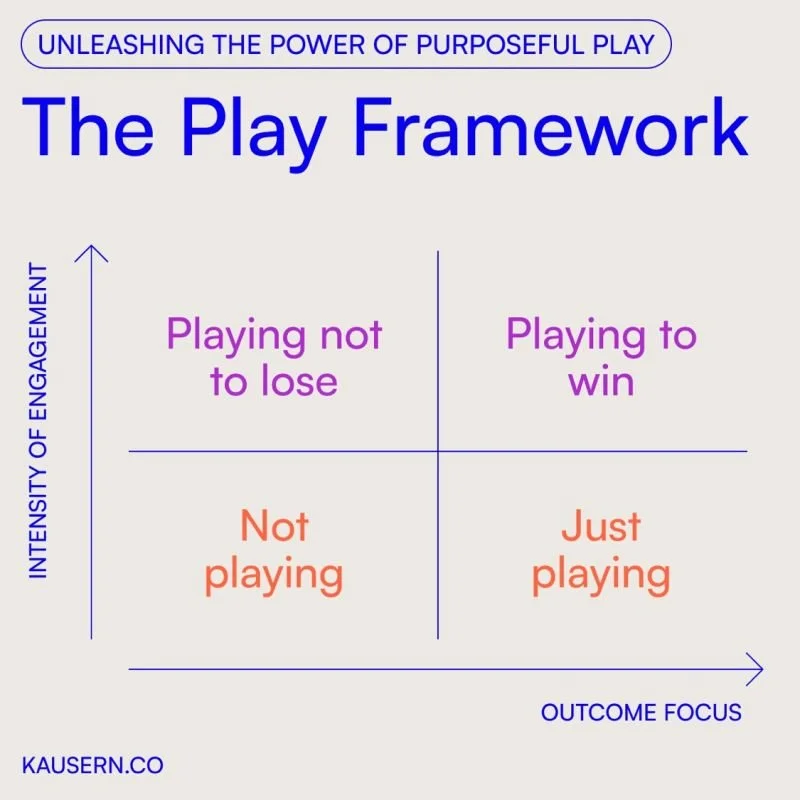The play framework
⚽️ “Life is not a game, but a SERIES of games.”
If this is true, then we had better be purposeful in how we play these “games”. I did some research and analysed some existing frameworks to develop this modest framework with the hope of helping us leaders assess our team members better based on how they are playing.
How it works:
X-axis: Outcome Focus
Left to right: From a focus on AVOIDING NEGATIVE OUTCOMES to a focus on ACHIEVING POSITIVE OUTCOMES.
Y-axis: Intensity of Engagement
Bottom to top: From LOW INTENSITY OF ENGAGEMENT to HIGH INTENSITY OF ENGAGEMENT.
Now, let's elaborate on each quadrant:
1. Playing to Win (Positive Outcome Focus, High Intensity)
Team members in this quadrant play with the intention of winning and possess a competitive and ambitious mindset. They are characterised by a hunger for success, a willingness to take calculated risks, and possess a determined attitude and commitment.
2. Playing Not to Lose (Negative Outcome Focus, High Intensity):
While team members are still actively involved, their primary focus is on avoiding negative outcomes. Individuals here may be risk-averse, cautious, and play defensively to prevent losses or to protect what they already have.
Let me illustrate the difference between these two quadrants with the simple game of capturing the flag in a paintball game. Standing between us and the flag are obstacles, hazards and the opposing team. Instead of focusing on running towards the flag to capture it, a team member with a ‘playing not to lose’ mindset will focus on the obstacles, “I hope I don’t get shot and hurt myself along the way!”. Whereas a ‘playing to win’ team member acknowledges the obstacles but possesses a positive expectation, “Every obstacle I pass through will bring me closer to that victory!"
3. Just Playing (Positive Outcome Focus, Low Intensity):
Team members in this quadrant have a relaxed and casual mindset. While positive outcomes may be desired, the emphasis is on the pleasure of the process. Think of casual gamers without a strong focus on winning or avoiding losses. Generally, team members in this quadrant show up at work to go through the motions.
4. Not Playing (Negative Outcome Focus, Low Intensity):
Team members here are disinterested and not actively participating. They are not motivated by specific goals or concerns and may be indifferent to the outcomes.
Keep in mind that The Play Framework only provides a tool for observation. It is not a definitive classification tool as it doesn’t capture the intricacies and full spectrum of human behaviour. A leader should always take time to check-in with their team members to assess their mindset and motivation towards the company’s goals.📍
How does this framework resonate with you? Drop a comment below and share your thoughts!

